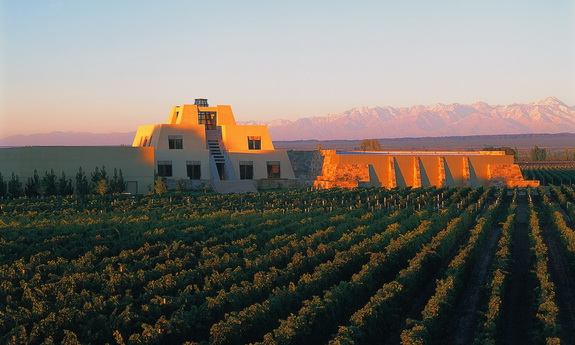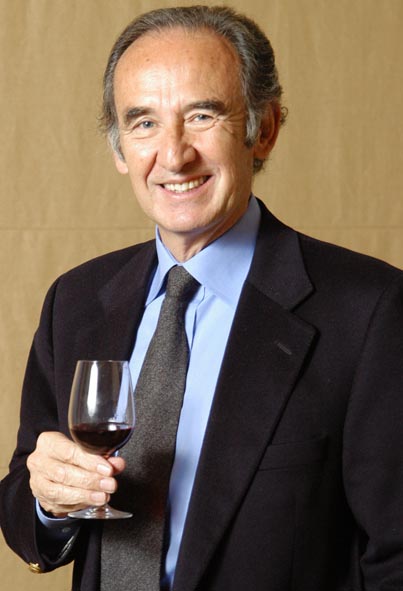 This morning, I’m driving to the Bodega Catena Zapata, the winery that changed my opinion of Argentine wine.
This morning, I’m driving to the Bodega Catena Zapata, the winery that changed my opinion of Argentine wine.
I remember drinking a Catena red wine one night at a friend’s house and guessing that it was Australian Shiraz.
My body hummed with contentment as I let myself down into its berry-decadence. I was pleasantly surprised to find out what it was, and started buying more Malbec.
Now, as I follow the long gravel road, a space-age stone temple rises from the vines, framed against the Andes silver peaks.
This extravagant architectural statement is the concrete gesture of one man’s desire to revolutionize his country’s wine industry.
As owner Nicolás Catena later explains: “We could not build a French château or an Italian palazzo here. We had to tell the world that we are doing something different in Argentina.”
The artistic inspiration for the building came from the ancient Mayan civilization, despite the fact that Mayans never ventured beyond Central America.
 Catena Wine Reviews and Ratings
Catena Wine Reviews and Ratings
However, they were great architects, fascinated with mathematical symmetry and the sacred geometry of pyramids.
This winery is built according to the same philosophy: every angle at exactly the same inclination toward the sun. Although it looks like a temple of molecular displacement, the beige stone gives it an earthy warmth.
Inside the sixteen-foot doors of burnished copper, I meet Catena’s export manager, Jorge Crotta who takes me on a tour of the tank room and cellar, while giving me the winery’s background.
It now produces about 3.6 million bottles of wine a year, exporting 85 percent of it. Seventy percent of the wines are red, with Malbec accounting for 55 percent of production.
The wines include Alamos, Catena, Catena Alta and the flagship, Catena Zapata as well as a joint venture with Bordeaux’s Château Lafite-Rothschild called Caro.
Afterward, he leads me up to the top level of the winery, to a quiet study filled with books and big leather chairs. Sunlight streams in through large open windows that look to the Andes.
I’m to be granted a rare audience with Dr. Nicolás Catena. As I wait, my stomach flip-flops. I recall thinking how what a coup it would be to interview Argentina’s most brilliant and insightful winemaker.
 Now I’m wondering how I can carry on a conversation with a man whose IQ is in a range that I’ll never see, except maybe on the bathroom scale.
Now I’m wondering how I can carry on a conversation with a man whose IQ is in a range that I’ll never see, except maybe on the bathroom scale.
I’m not prepared to defend any thesis to this professor.
A few minutes later, the door opens and a silver-haired, bespectacled man enters. He looks every inch the distinguished scholar in a navy corduroy jacket and crisp white shirt.
This takes me right back to one-on-one tutorials at Oxford University; I can feel the sweat between my fingers and down my back.
His blue eyes radiate from a tanned, weathered face as he greets me in a soft Spanish-accented voice: “Please, call me Nicolás.”
As he pours me a glass of his brooding, blackberry-rich Catena Malbec, he tells me about his life as an academic and a vintner.
Nicolás Catena has lived among the grapevines for all of his seven decades. He was even born in the vineyard since his mother didn’t make it to the hospital in time for the birth of the last of her five sons.
At age six, he was already walking the family horses out to their pasture several hours before school in the mornings, and then bringing them back home again at the end of the day.
That robust work ethic has been in the Catena family for generations. In 1898, his grandfather Nicola left a small village in …
Read Part 2 of Catena Wine …
Note: This is an excerpt from my second book Unquenchable: A Tipsy Search for the World’s Best Bargain Wines.
Although this article may not be copied on other sites, you are welcome to link to it and to comment … please ;)







